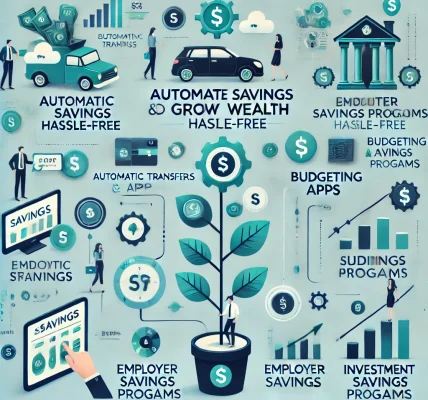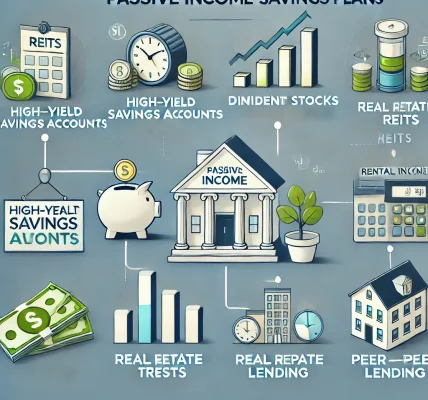As a millennial, you may find yourself juggling various financial goals—whether it’s paying off student loans, buying a home, or saving for retirement. One of the most important goals to prioritize, however, is saving for your future. The earlier you start saving, the more time your money has to grow, thanks to the power of compound interest.
But with so many saving and investment options available, it can be overwhelming to figure out where to begin. In this blog, we’ll walk you through the best saving plans for millennials, how to get started, and why building a strong saving habit today will secure your financial future tomorrow.
Why Should Millennials Focus on Saving?
Millennials, those born roughly between 1981 and 1996, are at a critical stage in life. Many are entering their peak earning years and are starting to think about long-term financial goals, such as homeownership, retirement, or even starting a family. While these milestones may seem distant, it’s crucial to start saving as early as possible to take full advantage of compound interest and reduce future financial stress.
Here are a few reasons why saving now is important for millennials:
- Long-Term Financial Security: Starting early gives you more time to accumulate wealth, which leads to financial security in retirement.
- Peace of Mind: Having savings set aside for emergencies or big life events reduces financial anxiety.
- Better Opportunities: Saving early allows you to take advantage of investment opportunities, buy a home, or even start your own business later in life.
Types of Saving Plans for Millennials
With countless saving options available, it’s important to understand the different plans that align with your financial goals and timeline. Here are some of the best saving plans for millennials:
1. Emergency Fund Savings Account
Before diving into long-term investments, having an emergency fund is essential. An emergency fund is a savings buffer that can help you cover unexpected expenses, such as medical bills, car repairs, or job loss.
Why It’s Important:
- It provides financial stability in case of an emergency.
- It keeps you from dipping into your retirement or investment funds when unforeseen events arise.
How to Start:
- Aim to save 3 to 6 months’ worth of living expenses in a high-yield savings account.
- Keep this fund easily accessible, but not so easily accessible that you’re tempted to use it for non-emergencies.
2. High-Yield Savings Accounts
A high-yield savings account offers better interest rates than a regular savings account. These accounts are perfect for millennials who want to grow their savings without taking on significant risk.
Why It’s Important:
- It allows your savings to grow passively while remaining liquid and low-risk.
- The interest earned is often tax-deferred, depending on the country and account type.
How to Start:
- Compare interest rates from different banks to find the best deal.
- Make regular deposits, even if it’s just a small amount each month, to keep building your savings.
3. Individual Retirement Accounts (IRAs) / 401(k)
Retirement may seem far off, but starting to save now can make a huge difference in the long run. IRAs and 401(k)s are great tax-advantaged options for millennials looking to grow their retirement savings.
- Traditional IRA: Contributions are tax-deductible, and your investments grow tax-deferred until you withdraw them in retirement.
- Roth IRA: Contributions are made with after-tax dollars, but withdrawals in retirement are tax-free.
- 401(k): Many employers offer a 401(k) plan with a matching contribution. Contributing to your 401(k) helps reduce your taxable income while saving for the future.
Why It’s Important:
- Compound interest plays a big role in retirement planning, so the earlier you start, the better.
- Contributions to these plans grow tax-free or tax-deferred, maximizing your savings.
How to Start:
- If your employer offers a 401(k) with matching, contribute enough to get the full match—it’s essentially free money.
- Set up automatic contributions to an IRA or 401(k) plan, so you invest regularly without thinking about it.
4. Mutual Funds and Exchange-Traded Funds (ETFs)
For millennials looking to take their saving game to the next level, mutual funds and ETFs are great options for growing wealth over time. These investment vehicles allow you to invest in a diversified portfolio of stocks, bonds, or other assets, which can help spread risk and enhance returns.
Why It’s Important:
- Mutual funds and ETFs allow you to invest in a range of assets, reducing risk through diversification.
- They have the potential for higher returns compared to traditional savings accounts or fixed deposits.
How to Start:
- If you’re new to investing, consider low-cost index funds or ETFs that track a market index like the S&P 500.
- Use a robo-advisor or a financial planner to help you select a portfolio based on your risk tolerance and goals.
5. Health Savings Account (HSA)
While millennials may not be thinking about health care costs in retirement, an HSA can be an excellent way to save for future medical expenses. The funds you contribute are tax-deductible, and if used for qualified medical expenses, they’re tax-free when withdrawn.
Why It’s Important:
- It’s a great way to prepare for rising health care costs in the future.
- Contributions grow tax-free, and you can carry the balance from year to year.
How to Start:
- Set up an HSA through your employer or independently if you qualify.
- Contribute as much as possible to maximize the tax benefits and long-term growth.
6. Investment Accounts for Short-Term Goals
If you have short-term financial goals—such as buying a house or going on a vacation—consider opening an investment account. These accounts allow you to invest in stocks, bonds, or other assets, but with a shorter investment horizon than retirement accounts.
Why It’s Important:
- You can invest in a variety of assets and generate returns higher than a savings account in the short term.
- These plans help you reach goals more quickly, such as a down payment on a house.
How to Start:
- Open an individual brokerage account and begin with a diversified portfolio of low-cost index funds or ETFs.
- Ensure that your investment strategy matches your timeline and risk tolerance.
Tips for Getting Started with Saving Plans
- Start Early: The earlier you begin saving, the more time your investments have to grow.
- Automate Your Contributions: Set up automatic transfers to your savings or investment accounts to ensure you’re regularly contributing.
- Diversify Your Investments: Don’t put all your money into one type of investment—spread it across different assets to reduce risk.
- Revisit Your Plan Regularly: As life changes, so should your savings and investment strategy. Review your plans yearly to ensure they still align with your goals.
Conclusion
Millennials face unique financial challenges, but they also have the advantage of time. The earlier you start saving and investing, the greater your financial freedom will be in the future. From emergency funds and retirement accounts to mutual funds and HSAs, there are a variety of saving plans that can help you meet your goals.




